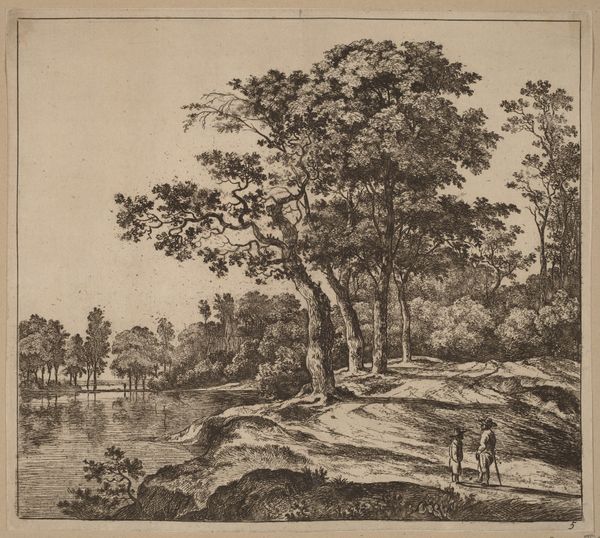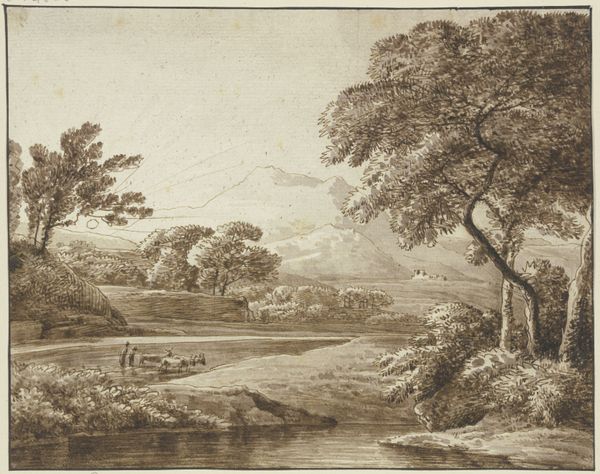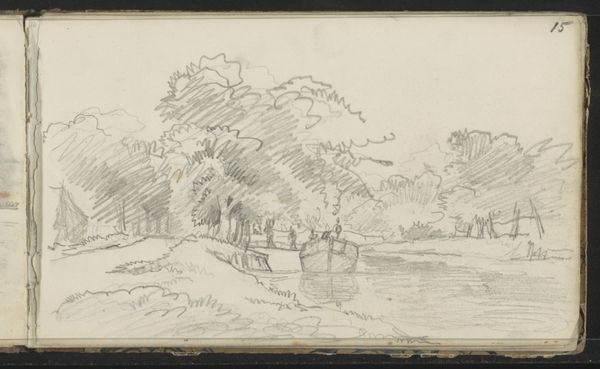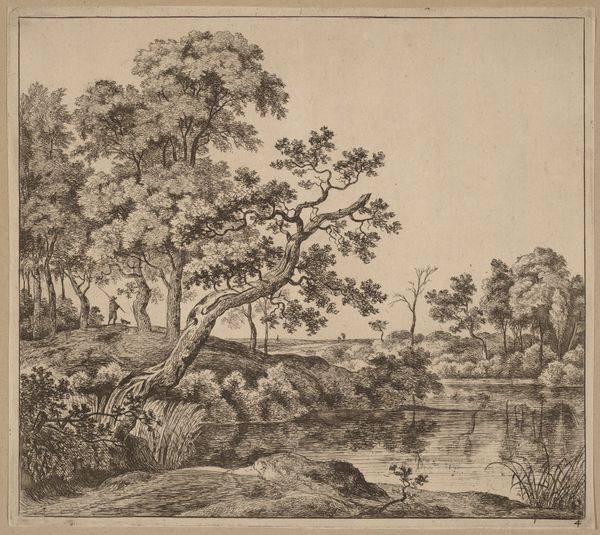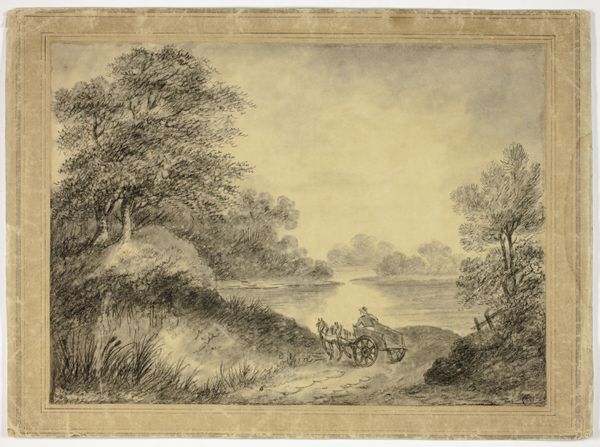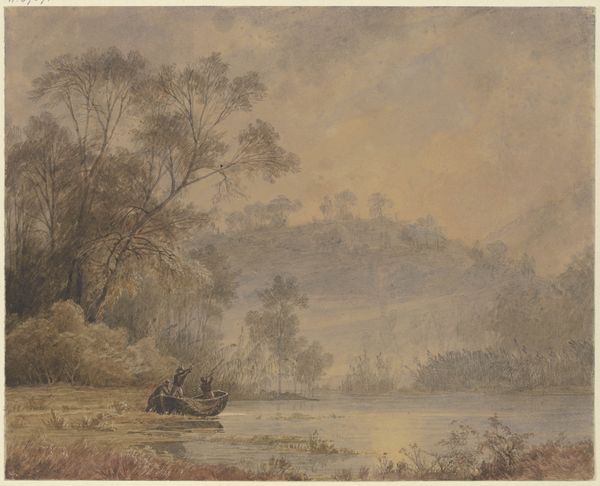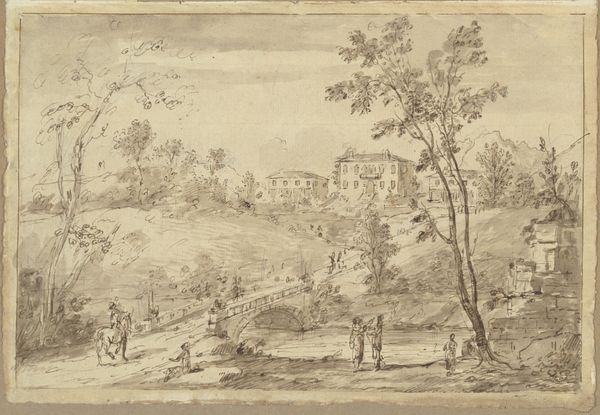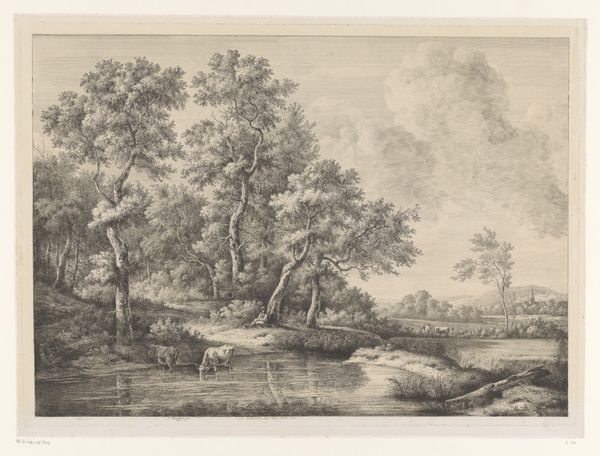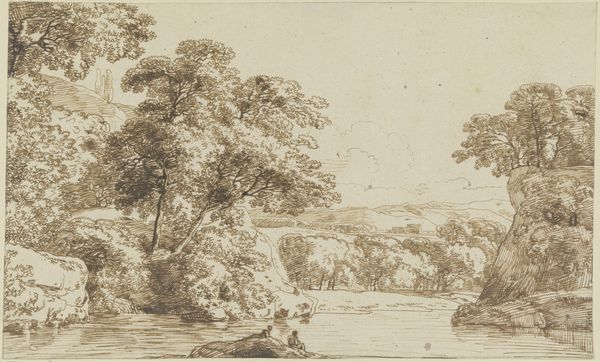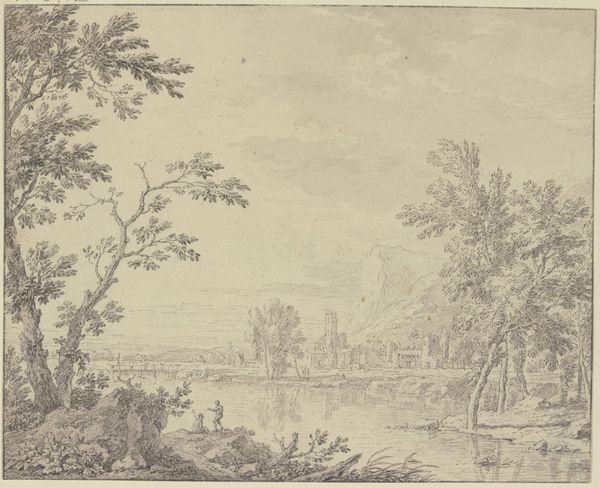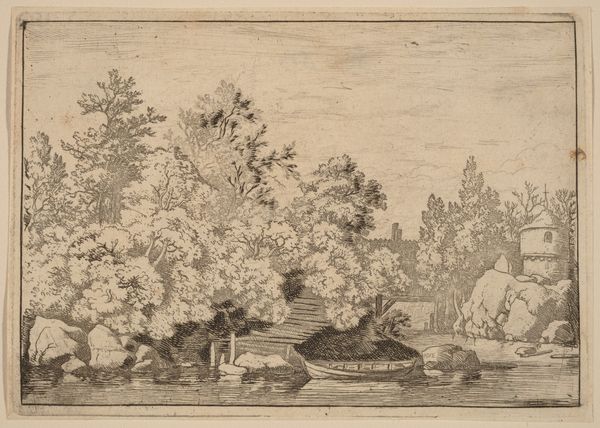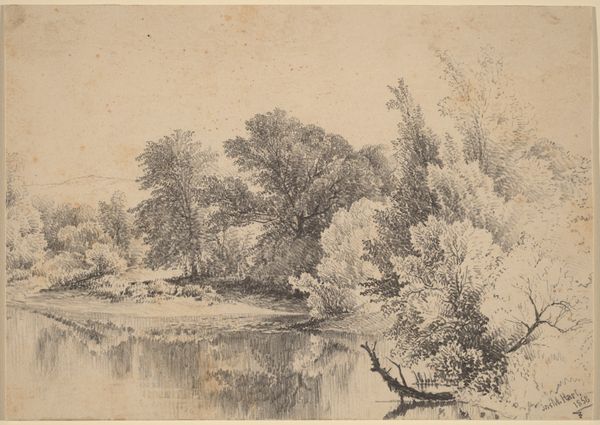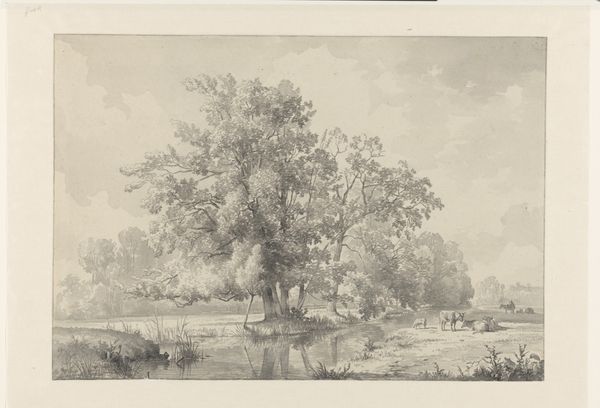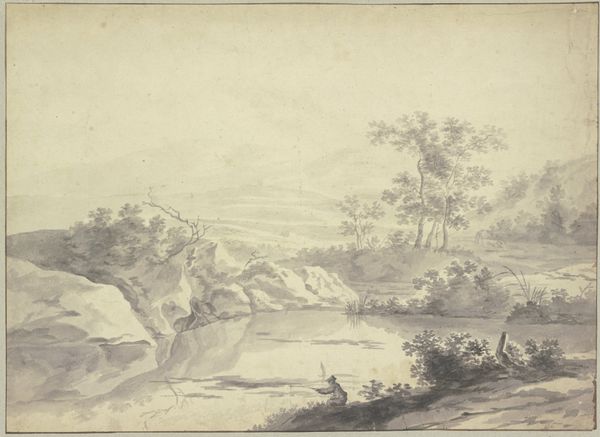
Ein Kahn mit einem stehenden und einem sitzenden Mann vor einer bewaldeten Insel
0:00
0:00
drawing
#
drawing
#
landscape
#
15_18th-century
Copyright: Public Domain
Editor: Here we have a drawing titled "Ein Kahn mit einem stehenden und einem sitzenden Mann vor einer bewaldeten Insel" by Benjamin Calau. The piece depicts two figures in a boat heading toward a small island. The muted tones create a really peaceful feeling. What stands out to you about this piece? Curator: Well, from a historical perspective, landscape drawings like this one became increasingly popular as print culture spread during the 18th century. How do you think drawings such as these altered society’s relationship with nature itself? Editor: I never thought of that, how a drawing might alter the viewers’ relationship with the natural world… Curator: Exactly. Prior to widespread reproduction, only the elite could experience detailed landscape views, often through paintings commissioned for private collections. As printed images circulated, ordinary citizens could also engage with idealised or romanticized landscapes and, arguably, participate in forming an image of "Nature" through art. Do you see other pieces of this trend in the museum? Editor: Actually, there's a whole room devoted to similar landscapes! What purpose would the piece serve with regular citizens being able to access art? Curator: Prints helped standardize visual culture across social classes. A shared visual language, depicting everything from idealized countrysides to moralistic allegories, fostered a sense of shared cultural identity. Even if someone never travelled, they might feel connected to larger cultural narratives by simply possessing similar prints or sharing those prints in their village. Do you suppose these are individualized artistic choices or visual propaganda of some sort? Editor: Hmm, I am learning so much; I always looked at individual styles rather than historical relevance in artwork. Curator: Considering the socio-political role of art changes your whole perspective, doesn’t it? Editor: Absolutely!
Comments
No comments
Be the first to comment and join the conversation on the ultimate creative platform.
